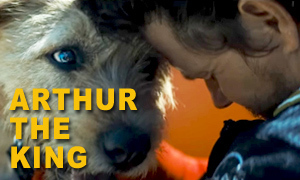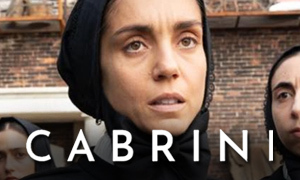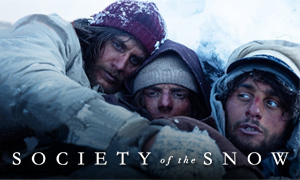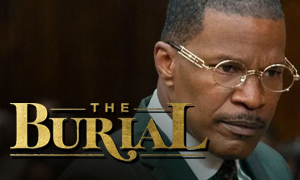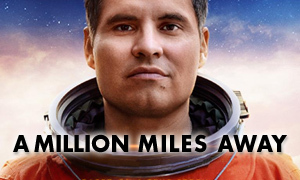Sully: History vs. Hollywood
| REEL FACE: | REAL FACE: |
Tom Hanks
Born: July 9, 1956 Birthplace: Concord, California, USA | Chesley "Sully" Sullenberger
Born: January 23, 1951 Birthplace: Denison, Texas, USA Bio: Captain/Pilot |
Aaron Eckhart
Born: March 12, 1968 Birthplace: Cupertino, California, USA | Jeff Skiles
Born: November 18, 1959 Birthplace: Oregon, Wisconsin, USA Bio: First Officer/Co-Pilot |
Laura Linney
Born: February 5, 1964 Birthplace: New York City, New York, USA | Lorraine Sullenberger
Born: August 7, 1958 Bio: Pilot's Wife |
Holt McCallany
Born: September 3, 1963 Birthplace: New York City, New York, USA | Mike Cleary
Bio: US Airline Pilots Association President |
Molly Hagan
Born: August 3, 1961 Birthplace: Minneapolis, Minnesota, USA | Doreen Welsh
Born: September 1, 1952 Birthplace: Pittsburgh, Pennsylvania, USA Bio: Flight Attendant |
Jane Gabbert
Birthplace: Wichita, Kansas, USA | Sheila Dail
Bio: Flight Attendant |
Ann Cusack
Born: May 22, 1961 Birthplace: Brooklyn, New York, USA | Donna Dent
Bio: Flight Attendant |
Autumn Reeser
Born: September 21, 1980 Birthplace: La Jolla, California, USA | Tess Sosa
Bio: Passenger with Baby |
Sam Huntington
Born: April 1, 1982 Birthplace: Peterborough, New Hampshire, USA | Jeff Kolodjay
Birthplace: Massachusetts, USA Bio: Passenger |
Christopher Curry
Born: October 22, 1948 Birthplace: Grand Rapids, Michigan, USA | Rob Kolodjay
Birthplace: Massachusetts, USA Bio: Passenger |
Patch Darragh
Birthplace: Toronto, Ontario, Canada | Patrick Harten
Born: January 26, 1974 Birthplace: New York, USA Bio: Air Traffic Controller |
Vince Lombardi
Born: December 7, 1976 Birthplace: Montclair, New Jersey, USA (Portrays Himself) | Vince Lombardi
Born: December 7, 1976 Birthplace: Montclair, New Jersey, USA Bio: Ferry Boat Captain |
How much experience did Chesley "Sully" Sullenberger have as a pilot?
"...for 42 years, I've been making small, regular deposits in this bank of experience, education and training. And on January 15 the balance was sufficient so that I could make a very large withdrawal," Sullenberger told 60 Minutes. In researching the Sully true story, we discovered that he learned to fly at age 16 in a Aeronca 7DC, taking off from an airstrip near his home. He entered the U.S. Air Force Academy in 1969 and was ranked his class's top flyer at graduation. He served as a fighter pilot in the Air Force between 1975 and 1979. He reached the rank of captain and served as a training officer, flight leader, and was a member of an aircraft accident investigation board. Sullenberger worked as a pilot for US Airways between 1980 and 2010. In 2007, he founded the consulting firm Safety Reliability Methods, which has assisted the NTSB in investigating several plane crashes. -TheObserver.com
Did Canada Geese really take out both engines?
Yes. Fact-checking the Sully movie reveals that the flight data recorder registered the plane at an altitude of 2,818 feet when the 66-ton Airbus A320 lost both engines after flying into a flock of Canada Geese at roughly 100 seconds into the flight. Passengers could hear a "colossal bam" when the birds were sucked into the engines. Flames could be seen coming from the left engine. -Miracle of the Hudson Plane Crash documentary
How long was the plane in the air?
The plane, which was bound for Charlotte, North Carolina, was in the air for approximately five minutes and twenty seconds after taking off from New York City's LaGuardia Airport and crash landing in the Hudson River. There were 208 seconds from when the US Airways Flight 1549 jet sucked geese into its engines at 2,818 feet above LaGuardia to the moment when Sully brought the craft down onto the Hudson (NYPost.com). While gliding, Captain Sully circled once over the Hudson River to help the passengers prepare for the water landing. "It was very quiet as we worked, my co-pilot and I. We were a team," the real Sullenberger recalled. "But to have zero thrust coming out of those engines was shocking - the silence" (TheObserver).
Does video exist of the Miracle on the Hudson crash landing?
Yes. Technically, it was a controlled water landing, as Tom Hanks' character emphasizes in the movie. The Coast Guard released a Miracle on the Hudson crash landing video that shows the plane descending into the Hudson River at 3:31pm on January 15, 2009. Watch the Sully crash landing video. US Airways Flight 1549 becomes visible on the left side of the screen just after the 2:00 minute mark of the video. The camera zooms in on the plane, which is seen floating downriver in the frigid water as the survivors step out onto the wings. "Hitting the water is hard," the real Sully told 60 Minutes anchor Katie Couric, who plays herself in the Sully movie. "It was a hard landing, and then we scooted along the surface for some point and then at some point the nose finally did come down as the speed decreased, and then we turned slightly to the left and stopped."
How fast was the plane really sinking?
Pilot Sullenberger and co-pilot Jeff Skiles didn't have enough time to go through the entire crash landing checklist. The ditch button, which seals the planes vents and outlets from taking on water, was never pressed. That, coupled with the fact that the impact had caused a breach near the plane's tail, resulted in the plane rapidly taking on water. As thousands of gallons of water poured in, the plane began to sink by the tail. The passengers would have just 24 minutes before the cabin and wings were fully submerged. -Miracle of the Hudson Plane Crash documentary
Did the passengers really fear that they were going to drown after surviving the water landing?
Yes, either that or perish from hypothermia in the freezing water of the Hudson River. Survivor Barry Leonard actually thought they were under water since that was all he could see out the window. As water came in and the back of the plane began to sink, the passengers feared the worst and began using their cell phones to call their loved ones as they scrambled for a way out of the plane. "People were actually climbing over seats to get out," says Rob Kolodjay, a retired postal worker who was on Flight 1549 with his son Jeff. -Miracle of the Hudson Plane Crash documentary
Did Sully stay in the plane to make sure no more passengers were on board?
Yes. The Sully true story confirms that Captain Sullenberger walked the plane twice to make sure that all of the passengers had gotten out safely. Once outside of the plane, he ushered passengers into the life rafts. He then used a knife given to him by a ferry boat crew member to cut the rafts loose from the plane so that they wouldn't be pulled under as the aircraft sank. -ABC News
Were the survivors rescued by New York City ferry boats?
Yes. The first boat to come to the aid of the sinking airliner was the ferry The Thomas Jefferson, which was part of the Hudson's commuter ferry services and was the closest vessel that could assist. It took approximately four minutes for ferry captain Vincent Lombardi to reach the floating plane. The ferry was not a rescue boat and its decks were nearly seven feet above the water, too high for the passengers to easily climb aboard. The ferry's crew used nets and rope ladders to help the survivors onto the boat. More ferry boats and a smaller Coast Guard vessel arrived to help pull people from the fuel-slick wings of the plane and the freezing water of the Hudson. The NYPD's scuba team came on the scene via helicopter, focusing on survivors struggling to stay afloat in the freezing water. Captain Sully was the last survivor to board a ferry. -Miracle of the Hudson Plane Crash documentary
How many lives were saved?
Pilot Chesley "Sully" Sullenberger saved all 155 lives on board (150 passengers and 5 crew) when he safely landed US Airways Flight 1549 on the Hudson River on January 15, 2009. -NYDailyNews.com
Did some of the passengers really suffer injuries?
Yes. "My knee hit my sternum and actually cracked my sternum," says survivor Barry Leonard (Miracle of the Hudson Plane Crash documentary). 78 people were treated for injuries. Most were minor, such as hypothermia, but five were severe, including a deep L-shaped laceration to flight attendant Doreen Welsh's leg (depicted in the movie).
Was Sully really wracked with guilt over whether he made the right choice in landing the plane in the water?
Not exactly. At the time, Sully expressed very little doubt with regard to his decision. The public instantly and unequivocally anointed him a hero and super-saint. The movie poses that Sully was privately tormented and wrought with guilt, especially after the FAA (Federal Aviation Administration) questioned his decision (which they did). "When was your last drink, Captain Sullenberger? Have you had any troubles at home?" they ask Tom Hanks' character. "Simulations show that you could make it back to the airport," another gripes. In real life, this process was far more drawn out and largely benign, as most such questions were routine.
Director Clint Eastwood is known for depicting tortured heroes (see American Sniper). Adding controversy and personal drama to the story certainly helps to fill in the time around the three-minute water landing. The Sully movie was based on Chesley Sullenberger's book Highest Duty: My Search for What Really Matters, which is thought to have netted the retired pilot a healthy six figures. How much personal drama was injected or heightened for the story is hard to say, but Sullenberger himself stands by the film. "The story being told came from my experiences, and reflects the many challenges that I faced and successfully overcame both during and after the flight," he said in a statement passed along by Warner Bros. -NYPost.com
Did Sully suffer PTSD symptoms after the accident?
Yes. Like in the Sully movie, the real Chesley Burnett Sullenberger III later stated that he suffered flashbacks and insomnia for several weeks after the accident (TheObserver.com). Sullenberger told 60 Minutes that the moments before the crash were "the worst sickening, pit-of-your-stomach, falling-through-the-floor feeling" that he'd ever experienced.
Was there really tension between Sully and his wife because of the media coverage after the accident?
Yes. During our investigation into the Sully movie true story, we learned that Captain Sullenberger and his family were being hurried around the country for interviews and events. "Early on there was some contention between us," Sully's wife Lorraine told the Oprah Winfrey Network, "because I said, 'This is going to kill us, I mean literally kill us. We can't do it all. I don't care who it is or what it is, we need to manage it better.'"
Did simulations really show that Sully could have made it back to the airport?
Yes, but mainly only when the "human factor" was omitted. Several months after the ditching, nearly two dozen emergency simulations were flown at the Airbus headquarters in Toulouse, France. Four out of four simulations were successful when the pilots returned to the closest LaGuardia runway. However, in the simulations the decision to turn back was made immediately after the engines blew. The simulated scenarios didn't account for the "human factor," essentially the 30 seconds it took to decide what to do. Nine more simulated attempts to land at LaGuardia were conducted, taking into account the human factor and variables like landing at a different LaGuardia runway or landing with the plane more severely disabled. Only three of those attempts were successful. In the end, the FAA agreed with what Sullenberger stated in his book, "I had to be certain we could make it," he wrote, because "it would rule out every other option" and could kill "who knows how many people on the ground." There was no guarantee that the 70-ton glider would clear Manhattan's skyline. -The Wall Street Journal
Are the NTSB board members in the movie based on real people?
No. The NTSB investigators were re-imagined for the movie, with only very loose correlations to the real-life NTSB board, which included Chairman Deborah A.P. Hersman, member Robert L. Sumwalt, and Vice Chairman Christopher A. Hart, among others. The real Sully insisted the names be changed for the film since the movie treats the NTSB investigators as the "villains" of the story, painting them to be more vindictive and out-to-get-'em than they were in real life. The movie's three main NTSB board members, Charles Porter, Ben Edwards and Elizabeth Davis (portrayed by Mike O'Malley, Jamey Sheridan and Anna Gunn), have no direct real-life counterparts. The film needed an antagonist and the NTSB became that villain. "The basic premise of the film is simply inaccurate," says one source connected to the NTSB (Condé Nast Traveler).
How long did it take for the NTSB investigators to conclude that Sully made the right decision to ditch the plane?
It took 15 months before federal crash investigators concluded that Capt. Chesley "Sully" Sullenberger and co-pilot Jeff Skiles made the right decision to ditch the plane in the Hudson River (The Wall Street Journal). That time frame is significantly condensed for the movie. "Until I read the script, I didn't know the investigative board was trying to paint the picture that [Sully] had done the wrong thing," said director Clint Eastwood. "They were kind of railroading him into [believing it was his] fault, and that wasn't the case at all" (EW.com).
How miraculous was Sully's water landing?
To get the water landing right and not end in disaster, pilot Chesley "Sully" Sullenberger had to bring Flight 1549 down at the perfect speed and angle. If the nose was angled up too high, the fuselage would take too much of the impact and the plane would break in half. This could also create too much drag and slow the plane down too much. Sloping the plane forward would increase the speed, but too much forward slope would mean the engines would hit the water first, causing the plane to break up.
How do the Miracle on the Hudson survivors feel about the film?
Of the survivors interviewed, most have expressed support for the movie. Baltimore lawyer James Hanks (no relation to the movie's star), 73, called the trailer a "fascinating inside look at how Sully saved all 155 of us, plus an unknown number of additional lives yet to be born to those on board." "It's accurate, pretty spot-on," said banker Ricardo Valeriano, 45, of Charlotte, North Carolina, who walked away from the flight he calls "a surreal moment, a bad dream." Another passenger expressed "mixed feelings" after watching the trailer. -NYDailyNews.com
Does the real Sully have any children?
Yes. The real Sully and his wife Lorraine have two daughters, Kelly and Kate (pictured below), who were 14 and 16 at the time of the 2009 Miracle on the Hudson.
Did controversy ensue when more than a thousand geese were caught and gassed following the crash?
Yes. In June and July of 2009, roughly a dozen workers from the United States Department of Agriculture Wildlife Services and the city's Parks and Recreation and Environmental Protection Departments honed in on 17 locations across New York, capturing and gassing 1,235 Canada Geese. Prior to the roundup, 1,739 eggs had been coated with corn oil to stop the air from getting in, which halts development. Wildlife advocates like Glenn Phillips, executive director of New York City Audubon, says that there was insufficient research done to determine how many birds to kill, citing that the birds that took out the engines were determined to have been migrant geese, not resident geese (NYTimes.com). According to National Geographic, more than 200 people have died in bird strike accidents since 1988, further emphasizing the significance of the problem.
Have any other planes crashed into the Hudson River?
Yes. While exploring the Sully true story, we learned that a vintage WWII fighter plane crashed into the Hudson River in May 2016, killing pilot Bill Gordon. The cause was most likely mechanical failure (NYPost.com). With regard to commercial airlines crashing into U.S. rivers, on January 13, 1982, Air Florida Flight 90, a Boeing 737, crashed into the frozen Potomac River after taking off from Washington National Airport in Virginia. Only five people on board survived. 74 on the plane and four on the ground died, including one initial survivor who perished after making sure that the other crash survivors were rescued. In 1984, a popular TV movie was made about the Potomac crash, titled Flight 90: Disaster on the Potomac.
I heard director Clint Eastwood had been involved in an emergency water landing, is that true?
Yes. Clint Eastwood had been involved in an emergency water landing when he was in the military as a young man. "I've been involved in a water landing before," he acknowledged when asked by Katie Couric. "Well, it was an exciting moment for a 21-year-old kid, but I was riding in the back of a military plane as a passenger, a free flight deal. Coming down the Pacific Coast from Seattle to San Francisco, we went in the ocean off of Point Reyes, California. It was a good water landing, much like Sully did. The plane didn't float though. We had about 30 seconds to get out of it, on the wing, and the water was coming up. The pilot said, 'What do you think?' I said, 'I guess we're going swimming.'" They got in the cold November water and swam for the shore, surviving the ditching. -Katie Couric Facebook Live Interview
Miracle on the Hudson Footage & Documentary
Watch Miracle on the Hudson footage, including Sully's water landing and the subsequent rescue. Then view a Captain Sully interview and a documentary that includes remarks from some of the Flight 1549 passengers.
Link-to-Learn More:

